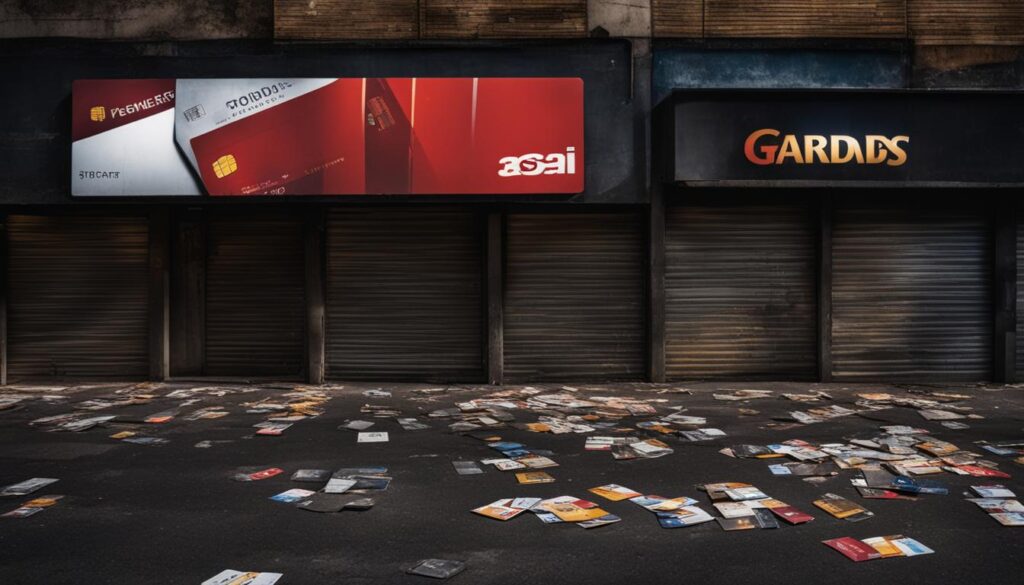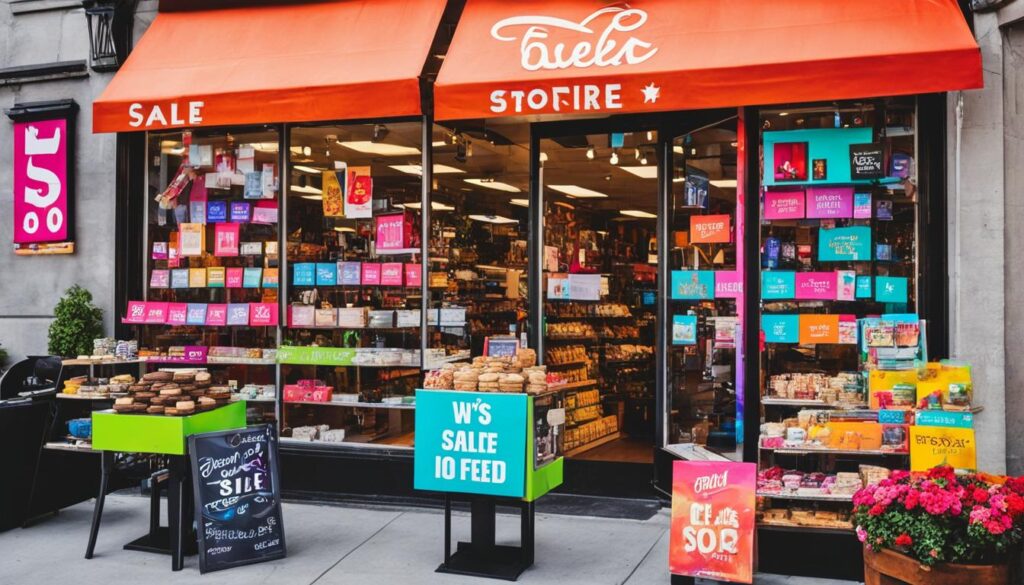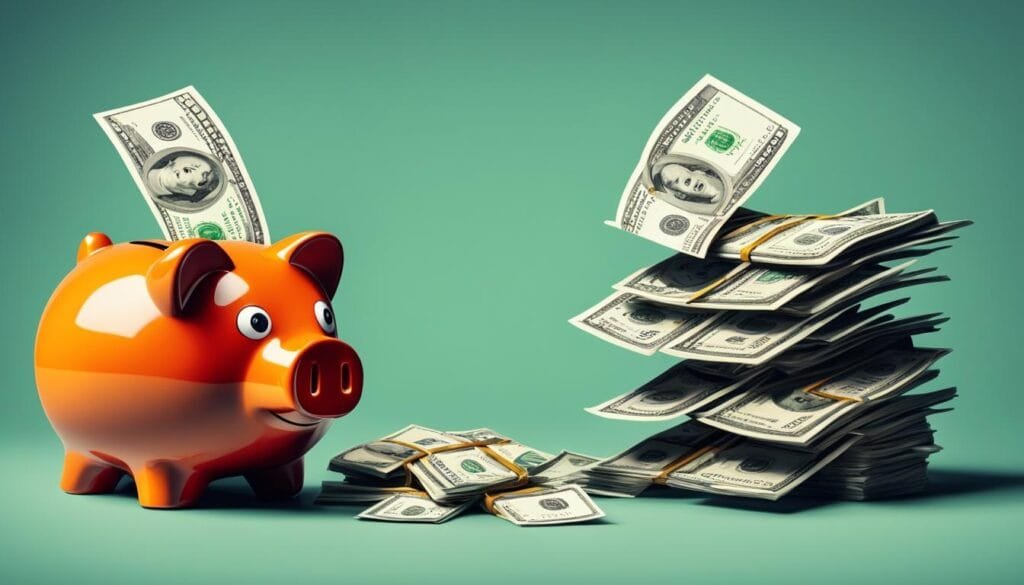Retailers employ various marketing tactics to influence consumer spending and potentially lead shoppers into debt. These tactics are designed to trigger emotional responses, exploit our senses, and create a sense of urgency to encourage impulse purchases. According to a study, Christmas retail sales in the United States reached $889.3 billion in 2021, highlighting the massive impact of these tactics.
Some common tactics include “buy now, pay later” schemes, offering store credit cards, promoting sales and deals, utilizing colors, music, smells, touch, and creating opportunities for impulse buys. It is important for consumers to be aware of these tactics and practice responsible spending to avoid falling into unnecessary debt.
Key Takeaways:
- Retailers use various marketing tactics to influence consumer spending and potentially lead them into debt.
- “Buy now, pay later” schemes, store credit cards, sales and deals, sensory manipulation, and impulse buy opportunities are commonly used tactics.
- Consumers should be aware of these tactics and practice responsible spending to avoid unnecessary debt.
The Impact of “Buy Now, Pay Later” Schemes
“Buy now, pay later” schemes have gained popularity among retailers as a way to entice customers into making purchases they may not be able to afford. Companies like Klarna, Affirm, and Afterpay offer installment payment options that allow consumers to split their payments over time. While these schemes may seem convenient, they can lead to debt accumulation and missed payments.
In fact, a study found that 74% of people who used buy now, pay later in the last three months have missed a payment. Even households with high incomes are not immune, as 82% of households making over $100,000 a year have also missed a payment. Retailers need to carefully consider the potential negative impact of these schemes on their customers’ financial well-being.
| Statistics | Percentage |
|---|---|
| Users of buy now, pay later schemes who have missed a payment | 74% |
| Households making over $100,000 a year who have missed a payment | 82% |
The Temptation of Store Credit Cards
Store credit cards are a common marketing tactic used by retailers to encourage customer loyalty and increase sales. When customers are at the cash register, store employees often offer the option to open a store credit card with the promise of saving a percentage on their purchase. However, these cards come with high interest rates, and if customers are unable to pay off their balance right away, they can quickly accumulate debt. Additionally, having a store credit card may lead to increased spending as customers are more likely to use the card for future purchases.
It is important for retailers to consider the potential financial strain these cards can cause for their customers and promote responsible financial practices. Encouraging customers to make informed decisions about store credit cards can help reduce the risk of falling into debt. Providing clear information about interest rates, payment terms, and potential fees can help customers make informed choices and avoid unnecessary financial burdens.
Retailers can also explore alternative strategies to foster customer loyalty and increase sales without resorting to store credit cards. For instance, implementing rewards programs or offering flexible return policies can incentivize repeat purchases and create a positive shopping experience for customers. By prioritizing the financial well-being of their customers, retailers can develop long-term relationships and build a reputation as a trusted and responsible brand.
The Risks of Store Credit Cards
Store credit cards may seem appealing with their instant discounts and convenient payment options. However, consumers need to be aware of the potential risks associated with these cards. Here are some key risks to consider:
- High Interest Rates: Store credit cards often come with higher interest rates compared to traditional credit cards. If customers carry a balance, they may end up paying significantly more in interest charges.
- Debt Accumulation: If customers are unable to pay off their balance in full each month, the debt can quickly accumulate and become unmanageable.
- Incentive for Impulsive Spending: Having a store credit card may lead to increased spending as customers are more likely to use the card for future purchases, even if they don’t have the funds available.
By understanding these risks, consumers can make informed decisions about opening store credit cards and avoid unnecessary debt. Retailers play a crucial role in ensuring that their customers are well-informed about the risks and benefits of store credit cards. Promoting responsible financial practices and offering alternatives can help create a more financially secure and satisfied customer base.

The Influence of Sales, Colors, Music, Smells, Touch, and Impulse Buys
Retailers employ various strategies to create a sense of urgency and entice customers to make impulse purchases. One common tactic is offering sales and deals, displaying bright signs or advertising discounts, which can make shoppers feel like they are getting a good deal. Colors also play a role in influencing consumer behavior, with red creating a sense of urgency and blue and green evoking calmness. Music is another powerful tool, as upbeat music can increase excitement and encourage spending, while nostalgic holiday tunes can trigger emotions and lead to unplanned purchases. Retailers also use scents to manipulate consumer behavior, as certain smells can create positive associations and lead to increased spending. Additionally, the act of touching a product can create a sense of ownership and increase the likelihood of purchase. Lastly, impulse buys can occur when customers are on their way to the checkout counter and encounter eye-catching items strategically placed to tempt them into buying more. Retailers need to be mindful of the potential for these tactics to lead to unnecessary and impulsive spending, and prioritize ethical marketing practices.

How can retailers use cross-selling tactics to entice consumers into taking on more debt?
Retailers can entice consumers to take on more debt by implementing strategic cross-selling tactics. By offering complementary products and services, such as crossselling products and debt management tools, retailers can increase the likelihood of consumers making additional purchases and taking on more debt. This approach can be a profitable strategy for retailers.
Conclusion
Retailers employ a wide range of effective marketing tactics to drive sales and influence consumer behavior. However, it is crucial for retailers to prioritize debt management and the financial well-being of their customers. By developing innovative and responsible retail marketing strategies, retailers can strike a balance between promoting products and protecting consumers from unnecessary debt.
Consumers must also play an active role in practicing responsible spending habits. Being aware of the various retail marketing tactics used to trigger impulse purchases can help individuals make informed decisions and avoid falling into unnecessary debt. By exercising caution and financial responsibility, consumers can have a more positive shopping experience and maintain their financial well-being.
Effective retail marketing tactics should align with ethical practices and prioritize the long-term customer relationship. By considering the potential impact of their marketing strategies on consumer debt, retailers can foster trust and loyalty, while also creating a positive shopping environment. Responsibly managing debt and prioritizing the financial well-being of both retailers and consumers is essential for a sustainable and successful retail industry.
FAQ
What marketing tactics do retailers use to get you into debt?
Retailers employ various marketing tactics such as “buy now, pay later” schemes, store credit cards, sales and deals, sensory stimuli, and impulse buys to influence consumer spending and potentially lead shoppers into debt.
What is the impact of “Buy Now, Pay Later” schemes?
“Buy now, pay later” schemes have gained popularity among retailers but can lead to debt accumulation and missed payments. Studies show that a significant percentage of people who use these schemes end up missing payments, including households with high incomes.
How do store credit cards contribute to debt?
Store credit cards are a common marketing tactic that can lead to debt accumulation. These cards often come with high interest rates, and if customers are unable to pay off their balance right away, they can quickly accumulate debt. Having a store credit card also increases the likelihood of increased spending.
How do sales, colors, music, smells, touch, and impulse buys influence consumer behavior?
Retailers use various strategies to create a sense of urgency and encourage impulse purchases. These include offering sales and deals, utilizing colors, playing music, using scents, creating opportunities for touch, and strategically placing eye-catching items at the checkout counter. These tactics can trigger emotional responses, exploit our senses, and increase the likelihood of unplanned purchases.
What should retailers and consumers consider when it comes to marketing tactics and managing debt?
Retailers should be mindful of the potential negative impact their marketing tactics can have on customer debt and prioritize responsible marketing practices. Consumers, on the other hand, should be aware of these tactics and practice responsible spending habits to avoid unnecessary debt.

